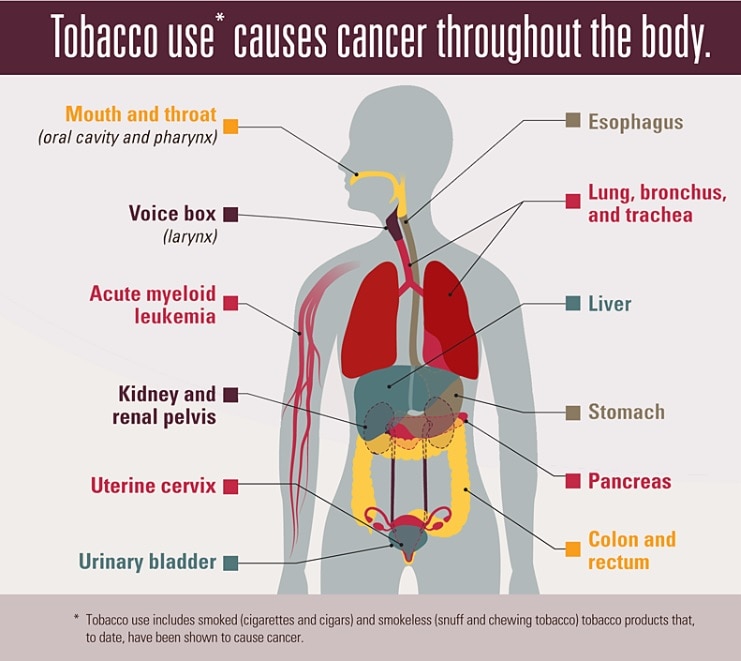What Are 4 Carcinogens Found In Tobacco

4-(Methylnitrosamino)-1-(3-pyridyl)-1-butanone (NNK) is a genotoxic carcinogen found in tobacco and tobacco smoke. Several in vitro and in vivo assays have been used for evaluating the genotoxicity of tobacco smoke and tobacco smoke constituents like NNK, yet it is not clear which in vitro assays ar. Tobacco smoke is made up of thousands of chemicals, including at least 70 known to cause cancer. These cancer-causing chemicals are referred to as carcinogens. Some of the chemicals found in tobacco smoke include: Nicotine (the addictive drug that produces the.
About 95% of the total smoke content is made up of gases (also known as vapor phase); principally oxygen, nitrogen and carbon dioxide. The particulate phase is quite rich and contains at least 4000 various compounds, most of which are hazardous carcinogens. Among such diversity in tobacco smoke, there are more than sixty identified carcinogens. Not surprisingly, two of the four newly listed carcinogens (known and anticipated) can be found in tobacco smoke. The organobromine compound 1-bromopropane is a colorless liquid that is used as a. We’ve listed information on a few compounds found in tobacco and cigarette smoke. Note that the most abundant ones, tar, nicotine and carbon monoxide are at the bottom of this list.
Are 'all-natural' cigarettes less harmful than ones with additives? How much do you know about the chemicals that occur naturally in the tobacco plant? Find out the hidden story about the tobacco growth stage below.
(3) Puff
(2) Product
Download video transcript
The tobacco plant itself contains harmful chemicals right from the start, including highly addictive nicotine.1,2 In addition to nicotine, toxic chemicals like cadmium and lead are often found in the soil where tobacco plants grow, and fertilizers often contain nitrates.1
These chemicals build up in the plant as it grows and get released when you light up. You inhale these chemicals when you smoke.
The bottom line: there is no such thing as safe tobacco.3
What are some of the chemicals found in the tobacco plant?
Carcinogens In Tobacco List
Some of the harmful chemicals found in tobacco plants include:
Quiz: How Much Do You Really Know About Tobacco?
Test your knowledge with these true/false questions.
Carcinogens Found In Cigarettes
Additional Resources

- U.S. Department of Health and Human Services (USDHHS). How Tobacco Smoke Causes Disease: The Biology and Behavioral Basis for Smoking-Attributable Disease: A Report of the Surgeon General. Atlanta, GA: U.S. Department of Health and Human Services, Centers for Disease Control and Prevention, National Center for Chronic Disease Prevention and Health Promotion, Office on Smoking and Health; 2010.
- U.S. Department of Health and Human Services (USDHHS). A Report of the Surgeon General: How Tobacco Smoke Causes Disease: What It Means to You (Consumer Booklet). Atlanta, GA: U.S. Department of Health and Human Services, Centers for Disease Control and Prevention, National Center for Chronic Disease Prevention and Health Promotion, Office on Smoking and Health; 2010.
- U.S. Department of Health and Human Services (USDHHS). How Tobacco Smoke Causes Disease. The Biology and Behavioral Basis for Smoking-Attributable Disease (Executive Summary). Atlanta, GA: U.S. Department of Health and Human Services, Centers for Disease Control and Prevention, National Center for Chronic Disease Prevention and Health Promotion, Office on Smoking and Health; 2010.
- U.S. Department of Health and Human Services (USDHHS). The Health Consequences of Smoking - 50 Years of Progress. A Report of the Surgeon General. Atlanta, GA: U.S. Department of Health and Human Services, Centers for Disease Control and Prevention, National Center for Chronic Disease Prevention and Health Promotion, Office on Smoking and Health; 2014.